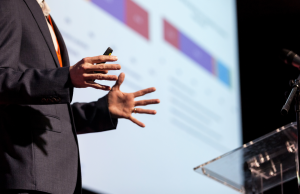Fundraising on Facebook has pulled in an aggregate $5 billion for nonprofit and private causes since the online platform began facilitating donations in 2015. The total reflects the efforts and contributions of more than 85 million global fundraiser organizers and donors, with the majority of donations clocking in at less than $25.
“Back in 2015, the ALS Association’s Ice Bucket Challenge was the inspiration for the first generation of [Facebook fundraising] tools,” Facebook Nonprofit Management Lead Kaitlyn Jankowski told The NonProfit Times.
The Ice Bucket Challenge was a 2014-and-beyond viral fundraiser for the Washington, D.C.-based amyotrophic lateral sclerosis research and support organization. Individuals posted videos of themselves as they poured buckets of ice and cold water over their heads and urged people in their social networks to make a donation.
Facebook has continued to modify and expand its fundraising tools since their initial launch. Its most recent innovation, implemented in December 2020, allows users of Facebook’s Instagram platform to post fundraising efforts in their Feed streams, giving the efforts greater exposure than in the Instagram Stories or Live streams.
Many of Facebook’s fundraising tools innovations have focused on making donations easy to complete. Tweaks include one-click donation options and easier social sharing of campaigns. Facebook absorbs the processing charges when donations are made to approved nonprofits.
A significant portion of the growth in Facebook fundraising has come from female users. Last year, Facebook’s global user base was 56% male and 44% female, according to Statistica, which also found Instagram’s users were 51% female and 49% male. But in 2020, women created twice as many campaigns as men, and made twice as many donations, accounting for 64% of all funds raised. Recipients included nonprofits, individuals and commercial businesses that have struggled as a result of the coronavirus pandemic.
Throughout the first years of Facebook fundraising, priorities have shifted. During 2016 and 2017, children’s health and mental health causes were the top categories. In 2018, equality and civil justice concerns moved to the forefront. By 2019, environmental issues and disaster relief, including significant funds raised for victims of Hurricane Dorian and a major earthquake in Albania, topped the list. In 2020, environmental concerns shared the top spot with humanitarian crises.
Given the multifaceted nature of coronavirus pandemic fundraising, such as medical research, small business recovery and personal protective equipment needs, breaking out fundraising to alleviate the impact of Covid-19 is challenging, Jankowski said. She anticipates response to the pandemic in various forms, along with societal concerns, will continue to be important to Facebook fundraising efforts during 2021.
Going forward, Jankowski believes the shift to digital fundraising will continue, even as the social distancing requirements of the coronavirus are lifted.
“A lot of nonprofits became reliant on digital fundraising, storytelling and making connections with supporters in a digital environment,” Jankowski said. “We saw a lot of nonprofits using Facebook Live [the company’s livestreaming platform] and putting supporters in Facebook groups to foster community.
“Fundraising has gone from something very seasonal or timebound to something that can happen all the time,” Jankowski continued. “On Facebook, people use their birthdays to fundraise every day. They think, ‘I have a birthday, I can use it to change the world.’”
As for nonprofits using Facebook, Jankowski anticipates they will continue exploring what the platform offers. Nonprofits have embraced of engagement data, audience insight and content analysis, as well as dashboards that track campaign metrics.
“Nonprofits have time and resource constraints,” Jankowski said. “They want to learn more about who their audience is and what they are engaging in.”









